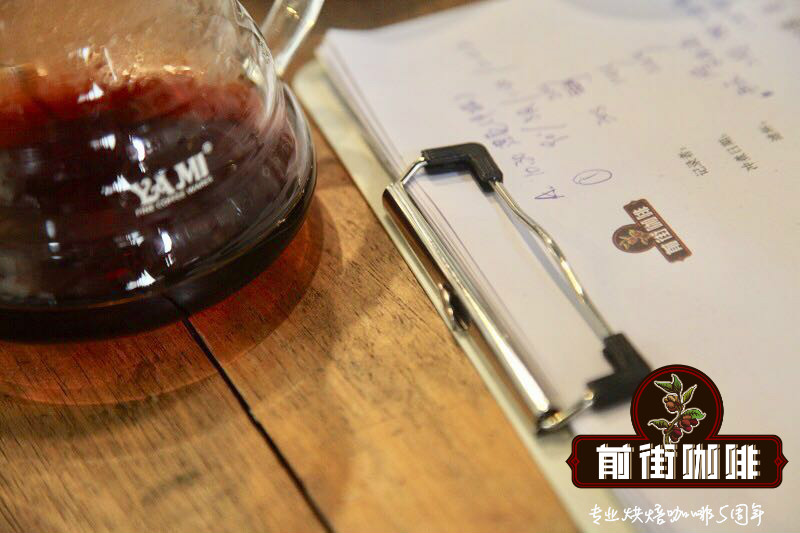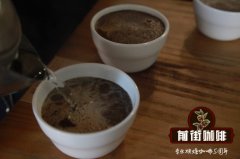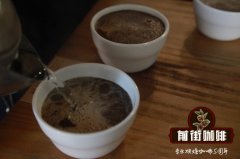What is the sun treatment of brandy at the Ocana Manor in Atitlan, Guatemala?

Professional coffee knowledge exchange more coffee bean information please follow the coffee workshop (Wechat official account cafe_style)
Although the country is small, it has the most diverse climate in the world. The soil, rainfall, humidity, altitude and temperature change enough to produce seven different types of Guatemalan Arabica coffee.
Atitlan (Atitlan)
This area includes all the land around Lake Attilan. Coffee is harvested mainly on the Pacific side in three alpine precipitation volcanoes. In no month, Attland will have less than 50 millimeters of rain. Most producers in the region will use water from the lake for wet processing. Chemicals take the place of chemicals and are often used as fertilizers. The incidence of diseases and insect pests at high altitudes (4000-5900 feet) is very low. The humidity in this area is as high as 70-80%. Drying occurs almost entirely in the sun, and almost 95% of coffee is grown by an average of 12 hectares of small producers. Most of the coffee harvested in these areas is bourbon, but Typica,Caturra and Catuai beans are also grown. The harvest is between December and March. Atitlan coffee is fragrant. They have crisp and bright acidity and a whole body.
Guatemala San Jose Ocana of Okana Manor, Guatemala
Founded by the Lazo family in 1910, it has been more than a hundred years. The initial management mode is forestry management, and it developed into a boutique coffee farm in 1920, providing its high quality coffee to the global boutique coffee market, which depends on the sufficient altitude of SAN JOSE OCANA, excellent clay soil and excellent and suitable variety selection.
In addition to the 85-hectare coffee-growing area, the manor has 90 hectares of land for forestry management and primeval forest protection. The farm also produces wood and oak charcoal, and the production patterns of all products revolve around sustainable development as the core of the concept and pass government approval and certification standards of the National Forestry Institute (INAB).
The manor uses highly technical tools to monitor plant health, plan shade tree planting and use native tree species to maintain ecological diversity, so as to reduce the environmental pressure on coffee plants. The ripening state of the picked fruit must be deep wine red or even close to fuchsia. The water for post-treatment comes from two nearby mountain springs. After peeling, nearly 80% of the waste water will be recycled, which will be used to feed cattle and use its manure as organic fertilizer for coffee plants. The fermentation treatment stage is also strictly controlled, and only a small amount of clean water is used in the last round of cleaning before being sent to the sun field, most of which is recycled water after treatment. In the stage of sun drying, the surface temperature is strictly controlled. when the sun intensity is too high, it will be covered with a layer of shade cloth to avoid damage.
Okana Manor independently bid for the batch of Moroccan black honey Finca San Jos é Oca ñ an Auction Lot Moroccan Black Honey
■ producing area: SAN JUAN SACATEPEQUEZ
■ altitude: 1905 Murray 1955 meters
■ treatment: honey treatment
■ level: SHB
■ variety: Arabica
■ flavor description: almonds, chocolate, citrus sweetness, good citric acid
Moroccan Black Honey is named after its dark brown sheep skin. When the coffee cherry has a sugar content of 26Brix or higher, peel it by machine and transport it directly to the sun-drying terrace in a wheelbarrow to avoid washing away the natural residual coffee pulp and pectin, and naturally ferment it during the sun. Also cover the special shade cloth at high temperature during the day to avoid damage, turn carefully every half hour for about 8 days, and then move to the greenhouse African scaffolding for slow drying. After several days of sun drying, all the well-preserved pectin layers are slowly absorbed, making the coffee sweet with almonds, chocolate, citrus and candy, while the acidity shows orange, lemon, bright citrus and a hint of green apple flavor. Until the water content of the coffee reaches 10.5%, it is then moved to the warehouse, which is located in the basement of a wooden building, and the storage temperature is controlled between 20 degrees Celsius and 21 degrees Celsius.
Okana Manor independently bids for batches of warm brandy Finca San Jos é Oca ñ an Auction Lot Brandy Natural
■ country: Guatemala
■ producing area: SAN JUAN SACATEPEQUEZ
■ altitude: 1905 Murray 1955 meters
■ treatment: insolation
■ level: SHB
■ variety: bourbon
■ flavor description: wine, apricot, pineapple, tropical fruit, sucrose, caramel, plum, green apple, citrus sweetness, lively and bright juice
This coffee comes from an ancient bourbon plant, and unlike today's bourbon varieties, it is genetically close to Tibica. When the coffee cherries are picked when the sugar content is in 25--26Brix, place them carefully on the sun-dried terrace for about 20 days. During this period, carefully turn the palm leaves to prevent the pulp from being squeezed. It is then moved to the greenhouse African scaffolding to continue to dry slowly and turn it every hour, which takes more than 10 days until the water content of the coffee reaches 10%.
END
Important Notice :
前街咖啡 FrontStreet Coffee has moved to new addredd:
FrontStreet Coffee Address: 315,Donghua East Road,GuangZhou
Tel:020 38364473
- Prev

What is the El Salvador HIQ standard? What kind of coffee do you grow in El Salvador?
Professional coffee knowledge exchange more coffee bean information please follow the coffee workshop (Wechat official account cafe_style) El Salvador is the smallest country in Central America and the most densely populated country, most of the main crops are coffee, but do not forget its existence because of its miniature, 60% of the coffee in El Salvador is grown in bourbon, such as orange and pink
- Next

How do you drink Nicaraguan sunburn Vera Saatchi coffee? Introduction of planting varieties in Buenos Aires Manor
Professional coffee knowledge exchange more coffee bean information please pay attention to the coffee workshop (Wechat official account cafe_style) the growing conditions in Nicaragua are not inferior to those in Central American countries, grown in shaded coffee at high elevations, round and balanced with less sharp acidity, the main unknown factors are war and hurricanes, resulting in the unsustainable operation of a single farm and no historical data.
Related
- Detailed explanation of Jadeite planting Land in Panamanian Jadeite Manor introduction to the grading system of Jadeite competitive bidding, Red bid, Green bid and Rose Summer
- Story of Coffee planting in Brenka region of Costa Rica Stonehenge Manor anaerobic heavy honey treatment of flavor mouth
- What's on the barrel of Blue Mountain Coffee beans?
- Can American coffee also pull flowers? How to use hot American style to pull out a good-looking pattern?
- Can you make a cold extract with coffee beans? What is the right proportion for cold-extracted coffee formula?
- Indonesian PWN Gold Mandrine Coffee Origin Features Flavor How to Chong? Mandolin coffee is American.
- A brief introduction to the flavor characteristics of Brazilian yellow bourbon coffee beans
- What is the effect of different water quality on the flavor of cold-extracted coffee? What kind of water is best for brewing coffee?
- Why do you think of Rose Summer whenever you mention Panamanian coffee?
- Introduction to the characteristics of authentic blue mountain coffee bean producing areas? What is the CIB Coffee Authority in Jamaica?

